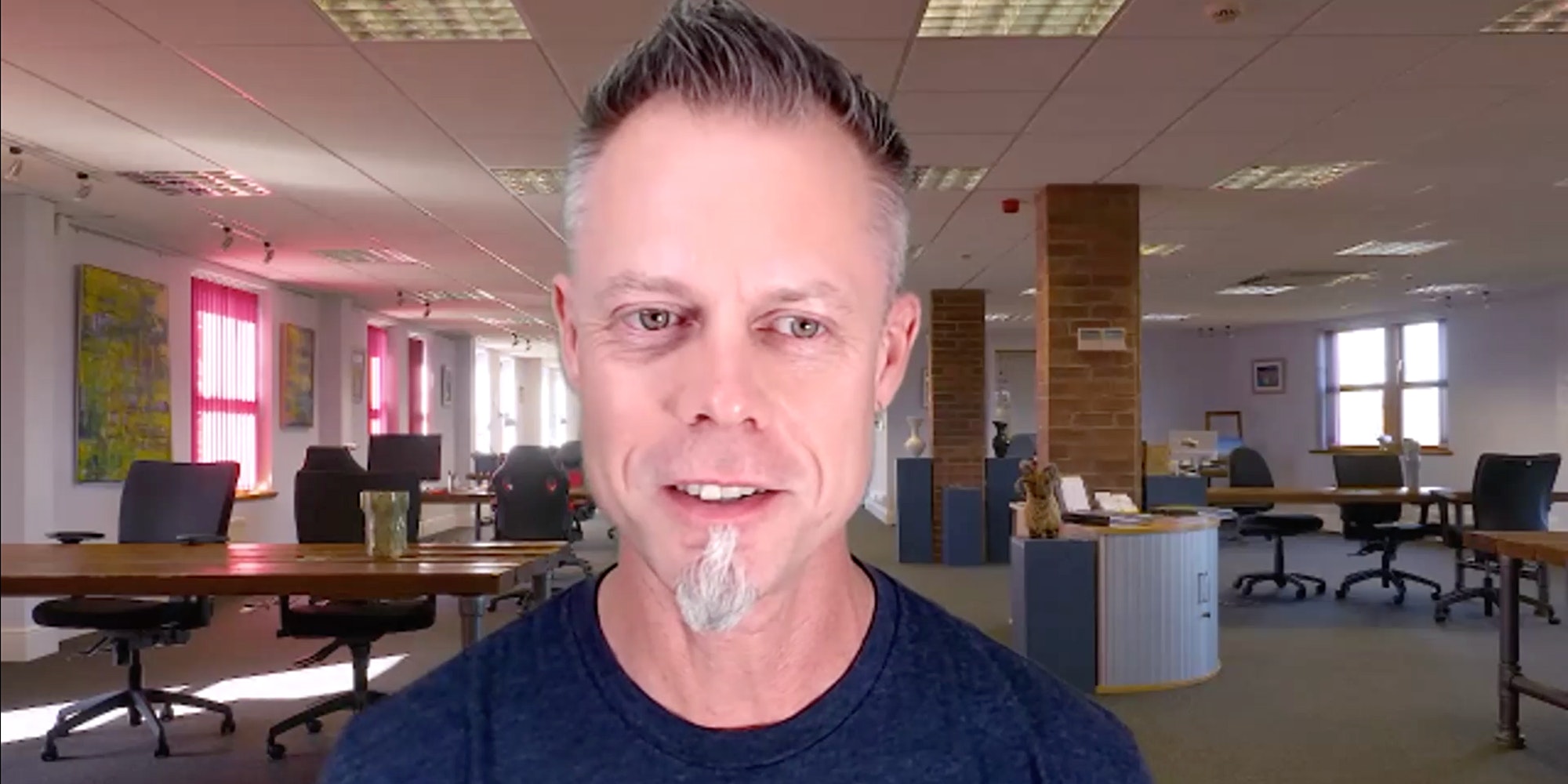Categories
Collaborate Better and Save the World
In this episode, Richard discusses how the Core Protocols can help our teams thrive no matter whether their members are together or miles apart. You can read more about it at https://kasperowski.com/collaborate-better-and-save-the-world/.
Collaborate Better and Save the World
with Richard Kasperowski


TRANSCRIPT
Richard Kasperowski:00:11
Hi, friends! Welcome back to With Great People, the podcast for high-performance teams.
Like many of us, I’ve been thinking about teams in times of challenge, teams in times of crisis. In this episode, I share some ideas about protocols, discovering your teams protocols, and applying them to achieve your big important goals together.
A version of this episode appears on my blog at https://kasperowski.com/collaborate-better-and-save-the-world/
To support this podcast, visit my website, kasperowski.com.
Collaborate Better and Save the World
Team Communication in Times of Crisis
Once upon a time, a very long time ago—also known as “February 2020”—my personal and professional life consisted of being together and communicating with other people face to face.
I gave talks at conferences, business coaching sessions in my clients’ offices, and professional training in their classrooms and in universities. I traveled all around the United States, my home country, and around the world, working to bring teams together so that they could collaborate and perform at their best. I served them as a teacher and facilitator by going to where they were, physically drawing them into a room with each other, helping them create the magic that teams can achieve together.
1 week, >40 hours face-to-face, 7373 miles
The week of February 18, 2020, back in these olden times, was particularly hectic, I realize, as I look back at my calendar. I started with some on-site coaching with a client near Boston—Agile software development coaching, leadership consulting, and a hands-on software coding dojo. It was a busy day, but I wasn’t done yet: I had a talk to deliver for a professional group in Providence, Rhode Island, that night.
The next day I traveled to Seattle for an afternoon of agile training at the Bill and Melinda Gates Foundation. The day after that, I taught an all-day High-Performance Team Building™ class for the same group.
It was great working with the Foundation! They were collaborating with another consulting company to build a better website for their stakeholders—donors, medical researchers, healthcare workers, and so on.
At the time, they were planning for future projects, looking at problems they could solve in the world proactively, unaware of the impact the brewing global health crisis would have on the Foundation’s priorities and plans. And while it seems crazy now that I traveled 3000 miles to teach a class face to face, it was how I worked and what I did—indeed, it was what we all felt the project deserved, to help the new team gel around a vision of what they wanted to accomplish together. We were looking forward to creating something great.
I finished up that busy week in Arizona, with a day of Agile business skills training, and a red-eye flight home to Boston. I traveled over 7,000 miles that week, in total, and while it was quite fragmented in terms of location, it wasn’t that unusual. I always want to give my best energy, attention, and focus to the clients I work with, which means being there with them, in their office, anywhere in the world.
Getting into team flow together
It also meant sharing that conviction with them and persuading people to get together in a room to collaborate face to face as the default. That if you care about the outcome of a project, if you’re creating something new and innovative, you need to look each other in the eye—literally in the eye, not through a webcam and a screen. The value this added was worth the costs and inconvenience of travel.
That buzz and synergy that gets you into that beautiful state of group flow only happen when you share physical space. You don’t need any special tools or technology or training. Just grab a pen and some post-its and a supply of good strong coffee. Get someone to orchestrate the conversation and shepherd it along, and collaboration just happens naturally.
It’s what we humans do best when we get aligned around a common goal: what we say or do inspires others’ thoughts and remarks. The creativity wells up. Each person builds on the others’ ideas. With a little intentionality in team behavior, like assuming positive intent and communicating respectfully, each person’s ideas amplify everyone else’s.
It wasn’t that I thought and taught that this could not take place remotely. It was just that being separated inevitably introduced friction and barriers to the flow of the process. I’d seen too many remote teams become disconnected in terms of mood and emotion, or find their activities limited by poor choices in remote collaboration tools. I’d never seen it done well. It was never a good alternative to face-to-face.
The new normal
But that was then. Not that long ago, but it feels like a lifetime.
Because right after that, everything changed for all of us. COVID-19. Every country and region in the world began shutting down, and eventually, we were all staying at home for the foreseeable future.
Everyone who could work from home was going to be doing so. We couldn’t collaborate face to face, even with our closest colleagues. Most of us didn’t know whether our job or business could be done that way—completely at home,
Many of us were afraid about the future of our careers, or more simply about our survival—fear of the virus itself. I grew up during the end of the Cold War with its dystopian dramas about nuclear war, fallout shelters, and nuclear winters. It was easy to start visualizing the virus as a threatening cloud of infection hanging in the air around us, silently spreading, lingering on surfaces, following us back into our homes if we allowed anything to penetrate our family safety bubbles.
As the world comes out of lockdown restrictions as unevenly as it went in, people are still afraid, still confused about what’s safe. The long-term mass psychological impact is yet to be seen. The world population is at risk of PTSD.
The COVID-19 health crisis made us all look at things differently, from new perspectives. We put aside petty squabbles. Families learned new ways of cooperating in close quarters. Neighborhoods rallied to support one another’s most vulnerable.
A time that reframed everything we had thought was important
Basic human fear and basic human connection: these primal sensations called into question so much of what many of us did for a living. Helping a marquee client’s team build a better website—was that even important right now?
Well, it turned out that it was important.
The work of organizations like the Gates Foundation has never mattered more to the future of the world. And getting back to normal, working, earning money, and putting food on the table are not abstractions; they are survival. After the initial shock, we all had to pick ourselves up and find new ways of doing things.
For me, that means some fundamental reflection and reframing of what collaboration means and how I teach it. Collaboration is more than what it looks like on the surface.
Keeping the world working and moving forward
To understand the essence of great teamwork, and then to be able to share and evangelize the behaviors of great teams… It turns out that great teamwork is more about what we do, how we do it, and who we are—and not at all about where we do it.
And you know what? It worked. These teams—the ones I’ve been visiting in physical space, all around the continent and all around the world, helping them work together seamlessly in one physical place—actually functioned just fine as remote collaborators. We just needed to redefine and re-present a few things, facilitate things differently. We all got back to work.
How did that happen so smoothly for ours and so many other great teams? How did they so easily swing into action in new ways?
Protocols
We had protocols that we could apply. Protocols: clearly defined behaviors and patterns that ensure we communicate clearly and accomplish our goals together.
We knew what to do because we’d been doing it all along. We’d been practicing the behaviors and activities and ways to communicate as a team, to the point that we internalized and understood them. We’d developed and normed these methods of acting when things were calm, and we could draw upon them to serve us in our hour of need.
When you have protocols in place, everyone knows what to do. People feel safe. They can focus 100% on their role and their locus of responsibility because they trust the others around them to play their part.
You realize that the place—like that collaboration space at the office with all the whiteboards—is much less important than the interpersonal interactions. And you can hang on to those interaction protocols and use them to serve you when things get weird. They provide comfort and familiarity when everything else is falling apart.
Most of my work is with high-tech teams, but this works for all groups in all kinds of work.
Watching a practiced team perform their protocols is a joy
Many professions use strict protocols to manage their work, so that the things that matter get done flawlessly, regardless of external pressure and stress.
Emergency medical teams have admissions protocols for each patient: to triage patients, to figure out who each patient is, share medical history, update treatment records, and so on.
Emergency departments have protocols for each of the many different kinds of major incidents that might occur. They invoke these particular protocols when something apparently unexpected happens— like an airplane crashes. For situations where you can’t predict when the stressful situation might occur, but you know that it could, these protocols are mapped out and drilled in advance. When the heat is on, there’s no time to waste deciding who will do what, or in what order things need to happen. People just apply the behaviors they practiced and get on with responding.
Surgical teams are another kind of healthcare team where the stakes are high—literally life and death. They have such strict protocols for surgical operation rooms that a new surgery team can form at a moment’s notice. There’s no room for error. Everyone knows their role and the group procedures, and they collaborate flawlessly the first time they work together. They perform and deliver the expected result. And it’s the same in the military, in aircraft cockpits, and so many other workplaces.
Less life-threatening emergencies can be tackled the same way, such as a team fixing urgent software bugs when there’s a crisis in a live production system. When everyone on the team feels secure in their roles and tasks within the team and knows the process and framework for resolving the emergency together, they deliver solutions in record time.
Teams like this work effectively in times of high stress. That stress is muted by the familiarity of their practiced behaviors and the ways they interact with each other. It yields creativity and confidence.
It happens in international diplomacy, too—there are protocols for the behavior of representatives from various countries—like how to greet or interact with a head of state. Because the stakes are so high, you can’t risk having war break out because someone was over-friendly or misbehaved in any way.
(And a quick side note—here’s an example of a world leader not following protocol. Imagine the leader of a powerful country waking up in the morning and posting rambling tweets about whatever is on his mind, threatening and bullying people who disagree with him. The result is chaos.)
So we resort to ceremony, to ritual—to protocol. Not for its own sake, but because it is effective.
We even do it on our own when working solo. I used to practice martial artists—I’m a second-degree black belt in taekwondo. We drilled our moves over and over. We used the English word forms to describe these sequences of movements. Many people know the Japanese word, kata, for this type of intentional practice in martial arts. A kata is a sequence of moves performed in a controlled and systematic way, practiced over and over until your brain doesn’t have to think about the steps anymore. You build muscle memory. Your body just knows what to do. So when you’re under the stress of a sports competition or a real fight, your moves just come out, and you defend yourself successfully.
My son tells a story about defending himself against a bully in elementary school. His martial arts skills appeared like magic. He didn’t hurt the other kid, but no one ever bothered him again.
So that’s the power of protocols: they let you transfer skills from the learning environment—in this case, a martial arts dojo—to wherever you need to use them.
Taking your protocols into new territory
This year almost all of us knowledge workers had to do this to some extent. We had to decouple the things we do from their original environment and apply them in new ways.
For me, the challenge was enormous. No one was waving a knife at me, but for my training and consulting company and most creative intellectual businesses, the threats were on the horizon. Everything I did in terms of training, coaching, and facilitation was optimized for face-to-face interaction in physical space.
I had to change my behaviors. I had to strip my practices down to the bare bones of their protocols and work out their essence.
How could I help my clients continue learning, connecting, delivering joy and value to the customers and stakeholders who care about their work? How could we figure out the essence of the work—the protocols—and do it in non-physical space?
We did it, and you can do it, too. But first, you need to identify and practice the protocols. They are your secure foundation, your resilience against future upheaval. It’s never too late to start.
You already have some protocols. No, trust me, you do, even if you haven’t thought about them this way and labeled them with names. It’s the routine stuff you do without even noticing. Like a fish in the water—the fish doesn’t know there’s anything special about breathing water and swimming all day—you need to step outside of your work and observe it from afar. You have to flip your perspective a little bit.
Observe your team’s work from an outside perspective
Don’t do it alone. Ask for help. Talk to your team. How do we do such-and-such? What happens when the so-and-so problem occurs? Perhaps you can even get an outsider, an independent observer, to watch you and help you nail it. (We call these independent outsiders “coaches,” and everyone should have one!) We so often internalize the most critical nuggets of our success behaviors and overlook them.
An outsider quietly observing the behaviors of successful teams—this is how the Core Protocols were first developed, the protocols I use all the time in training and coaching high-performance teams. Jim and Michele McCarthy studied successful teams’ actions, encoding the success behaviors they observed as reproducible behavior protocols. The McCarthys didn’t intervene in the activities of the groups they studied—that would have influenced and changed the team behaviors they were observing. They just sat and watched. You can do the same kind of observational research with yourself, your teams, and your organization.
Once you have codified your protocols, then you can examine them, investigate them, respectfully, positively, and generatively, as a team. Ask yourselves: “Do we really need to do this? Yes, and this is why… What happens when we do X instead of Y, what is the outcome down the line?”
How could we still do that, if the environment or context changed overnight?
It’s a fantastic process. It will teach you so much about yourself and your team. It will let you celebrate and recognize what makes your team unique. It will connect you strongly. As a result, you’ll be both happier and more effective together.
You’ll know together what your success behaviors are. You’ll be able to practice them, review them, acknowledge them, improve them. Notice if you deviate from one of your success protocols—what happens? Revisit your protocol and see what’s going on. Has the situation changed? Did you get lazy? Or does the protocol need updating? Would this protocol still serve us if the context changed?
You probably know how it feels when your team is in perfect flow, when you’re working at your best together. Draw on your past experiences, the times you’ve collaborated, gotten stuff done, and how amazing it felt.
Imagine being able to channel that feeling and that effectiveness, when things are at their worst, when the sky is falling, when the world is in crisis.
That’s why we practice the things that work, over and over, before a crisis. It’s because you don’t have time to learn new behaviors and routines when shit happens, you don’t even have time to think about it. You already have to know what to do.
I’ve learned a lot during these exciting times, including new ways to do things I’d been doing for years.
I learned that the Core Protocols, as an operating system for high-performance teams, are truly universal and location-independent. The protocols for great teams are presence-independent: they work when you are face-to-face, and they work when you are continents apart.
Checking in—glad, sad, mad, afraid
Checking In—sharing your emotions with your teammates—and Checking Out—letting your teammates know that you’re having trouble staying present with them—these two simple protocols transfer easily to remote work. The emotion check-in helps us establish our presence within the team and connect. It’s even more important in online space to be present and connected, to say that we’re here and share how we feel. It tees everyone up to be on the same page, to be present together, ready to be creative and effective, even if we’re thousands of miles apart in physical space.
These simple protocols make us strong. Having these shared practices bonds us together as a team.
From that strength comes greatness and resilience. A better Us. More creativity. More invention. More productivity. More joy. More humanity. We thrive through a crisis, and we come back better.
There’s a long way to go for the world to get well, grieve its losses, and recover economically and humanly. But history teaches us that after each crisis, whether it’s war or depression or pandemic, a wave of innovation and development follows, a boom of creativity and progress.
The things we learn when times are unbearably hard are the things that will help us surf this wave with style. They help us build resilience for the next “black swan” event.
Collaboration will save the world
With the same technologies and tools that I am using for online teaming, teaching, and coaching, the same way you are reading/listening to this right now, the brightest minds of the world are collaborating—across cultures, continents, and languages. A problem like this will never be solved by one person, one local collocated team, or one country or one government’s best brains.
Scientific communities are working together remotely, online, to develop vaccines, to find cures, to share data and learning, to pool their knowledge for the greater good. We’re collectively keeping supply lines open and feeding people the world over. We’re doing all this globally and without borders.
The tools are there. The protocols are there. As a result, we’re pulling through it together.
A version of this blog will appear on HSTalks.






